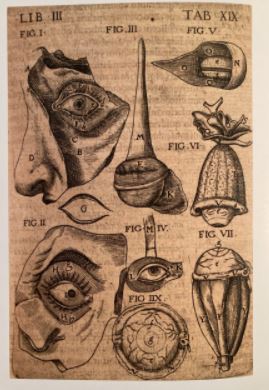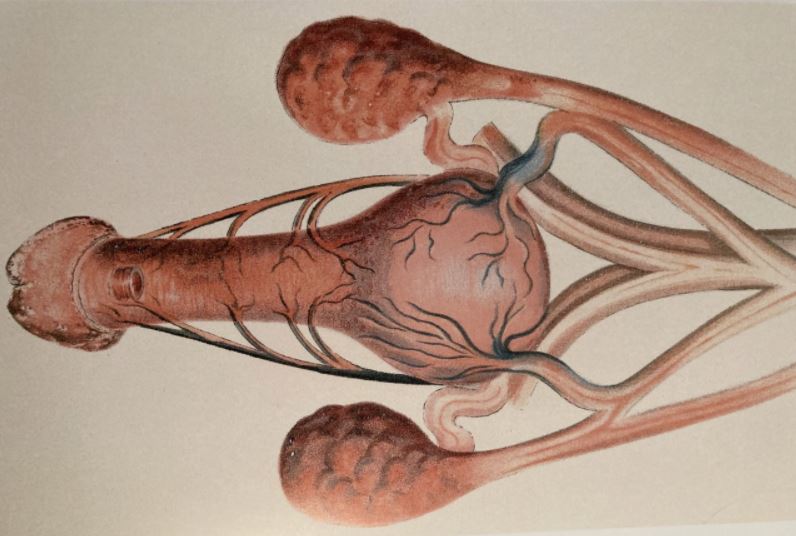24/10/2021 MA Reflections; 6 weeks in
- Rachael
- Nov 9, 2021
- 4 min read
*Please note for the first few entries of this reflective journal, the dates will not line up as they were kept in a document before publishing online*
Starting this journal a little late in the game, I feel I have quite a bit to reflect upon, and so, this will likely be quite a lengthy entry. Having spent the time since finishing my BA working in a sewing shop, a job I still do two days a week, I came into the first few weeks of the MA a bit dazed, trying to get back into the academic rhythm, knowing the realm I wanted to be in, but not the exact, specific, pin-pointed location of research.
I’m interested in the uncanny. I’m interested in bodies and anatomy. I’m interested in feminism and psychoanalytic theory.
Using these three points of interest to begin constructing my proposal for the MA, I started to see how these could link together, to form a picture of the unsafety of the feminine body in the 21st century.
Through recent personal experiences and a bit of research, I discovered how under-researched conditions that people with uteruses have, are. Only 2% of funding goes towards researching reproductive health, and a large portion of this towards fertility treatments. In America, women were only permitted to participate in medical trials as of the 1990’s, as it was believed that the trial on lab rats and men were enough to suffice, as female hormones would ‘tamper’ with the data collected. It is well quoted and well known, though rarely acknowledged in the UK, that doctors are to black women what police are to black men. A picture started to form in my mind: the medical field wasn’t made for us.
This is not to say that the level of care experienced cant always be good, or even excellent, but more so that there still lies a crucial gap in knowledge towards uterus-related conditions, that may lead us toward a better, more caring understanding of the body. This knowledge would benefit more than half the population: women, trans men, trans women, gender non-binary, to understand anatomy and how we can best cope with the body when it doesn’t function in the way that it should.
It felt as though there was a real lack of care towards the feminine body, and for me this belief was surmounted by the recent increase in ‘spiking’ in nightclubs and bars, alongside the rise of gender-based violence. Our bodies don’t feel safe, there is an enforced vulnerability that is becoming more and more inescapable.
Perhaps this is the transition to realistic adulthood as a women in the 21st century, to have an increased awareness of the dangers that may lie ahead, but if it is; I don’t want it. I don’t believe it is another thing that we should just have to accept, and I also feel that we are potentially coming into a real period of change socially, medically, and politically, due to the pandemic, and this should be one of the issues that is also highlighted.
Bringing these thoughts into my practice, I have been looking to historical anatomical drawings, considering how these were made in the times of ‘hysteria’ and ‘wandering wombs’, and how these were the first iteration of misunderstood bodies. Linking with this with psychoanalytic feminism and the uncanny, the root of the uncanny arguably comes from the maternal body, with psychoanalysis stating (in so many words) that men become fearful of women as they somehow believe them to be the product of castration, the inverted version of man.
Taking this discussion forward practically, I am planning to create textile works that create a reflection of the feminine body through this uncanny lens. I use textiles and sewing as for me there is a certain care taken with this medium, the fabrics used standing-in as a second skin, the stitching as a reparative action.
I have so far been building upon the practical skills needed to carry this out by taking fashion manufacture workshops; learning how to use the industrial sewing machines, techniques for pattern making and garment construction. These are skills I have already began to transfer into the creation of a wearable garment, to be used for photographs, performative action, or video work.
After the creation of this garment, and the prompting of myself to consider video work, I started to think about how the work may also start to become more contemporary by the inclusion of moving image work into the textile/sculpture. This could be through means of screens contained within the sculpture, or projection, which could open up many different avenues. This is something that I feel will elevate the work, bring more uncanny elements into it, and relate it more to the contemporary era. Movement within the work gives it a human element, it makes us want to know more about what is going on, rather than work that is static. The use of videos and screens also highly relates to the images of the body; x-rays, scans, social media, film, advertising, etc. all exist on screens.
So, this is where I am at currently, a place in which I have begun making developmental works, some of which have potential to be moved forward, some of which definitely need left on the studio floor. For the next couple of weeks I want to dive more deeply into the research, collecting more references to back up the claims and themes explored in my work, but also to continue on the art making journey, particularly with the moving image and sculptural hybrid. I hope that the starting and continuation of this journal outlining my studies and development, will help me to reflect on the journey with criticality – ultimately benefitting what is produced- and also to create a written accompaniment of where I get to at the end of the MA in 2022.




























Comments